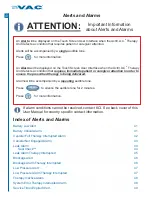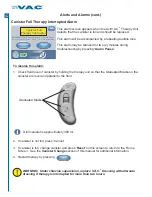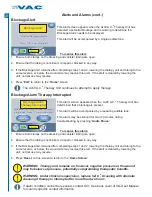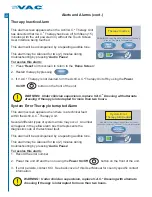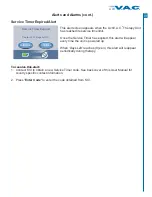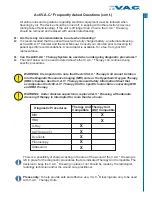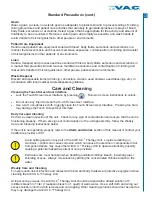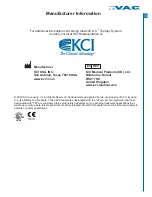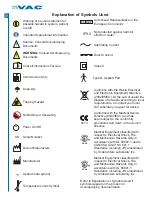
Standard Precautions
The following are the KCI recommended daily and weekly cleaning and infection control procedures
for the ActiV.A.C. Therapy Unit.
®
Always follow Standard Precautions.
Standard Precautions are designed to reduce the risk of transmission of microorganisms from both
known and unknown sources of infection. These precautions can be applied to all patients,
regardless of their diagnosis or presumed infection status. Standard Precautions should be used
when contact is anticipated with blood and all body fluids. This also includes secretions and
excretions, except sweat, regardless of whether blood is visible or not, non-intact skin (i.e., open
wounds) and mucous membranes.
Proper hand washing is the most important step in preventing the spread of infection. Follow these
steps to properly wash hands:
Wet hands with warm, running water and apply liquid or clean bar soap. Lather well.
Rub hands together vigorously for at least 15 seconds.
Scrub all surfaces, including the backs of hands, wrist, between fingers and under fingernails.
Rinse well.
Dry hands with a clean or disposable towel.
Use a towel to turn off the faucet.
Alcohol based hand sanitizers are a good alternative when soap and water are not available. They
have been shown to be more effective than soap and water in decreasing the number of bacteria
and viruses. Use only 'alcohol based' products since the hand sanitizers without alcohol do not have
the same effect. To properly use an alcohol based sanitizer, follow these steps:
Apply about ½ teaspoon of the product to the palm of the hand.
Rub hands together, covering all surfaces of the hands, until they are dry.
If hands are visibly dirty, however, wash with soap and water rather than a sanitizer.
Wash hands before and after direct contact with the patient. When using gloves, wash hands
immediately after gloves are removed, between patient contacts and when necessary to avoid
transfer of microorganisms to other patients or environments. It may be necessary to wash hands
between tasks and procedures on the same patient to prevent cross-contamination of different body
sites.
Wear medical gloves when touching blood, body fluids, secretions, excretions and contaminated
items. Medical gloves may be clean and non-sterile, latex or latex-free. Put clean gloves on just
before touching moist areas, such as mucous membranes and non-intact skin. Change gloves
between tasks and procedures on the same patient when gloves become contaminated or soiled.
Remove gloves promptly after use, before touching non-contaminated items and environmental
surfaces. Gloves do not provide complete protection against hand contamination. Hands should be
washed immediately after completed tasks or procedures to avoid transfer of microorganisms to
other people or environments.
Wear a mask and eye protection or a face shield to protect the mucous membranes of the eyes,
nose and mouth during procedures, and patient care activities that are likely to generate splashes or
sprays of blood, body fluids, secretions and excretions.
Hand Washing
Gloves
Mask, Eye Protection, Face Shield
·
·
·
·
·
·
·
·
52
®
A
ctI



